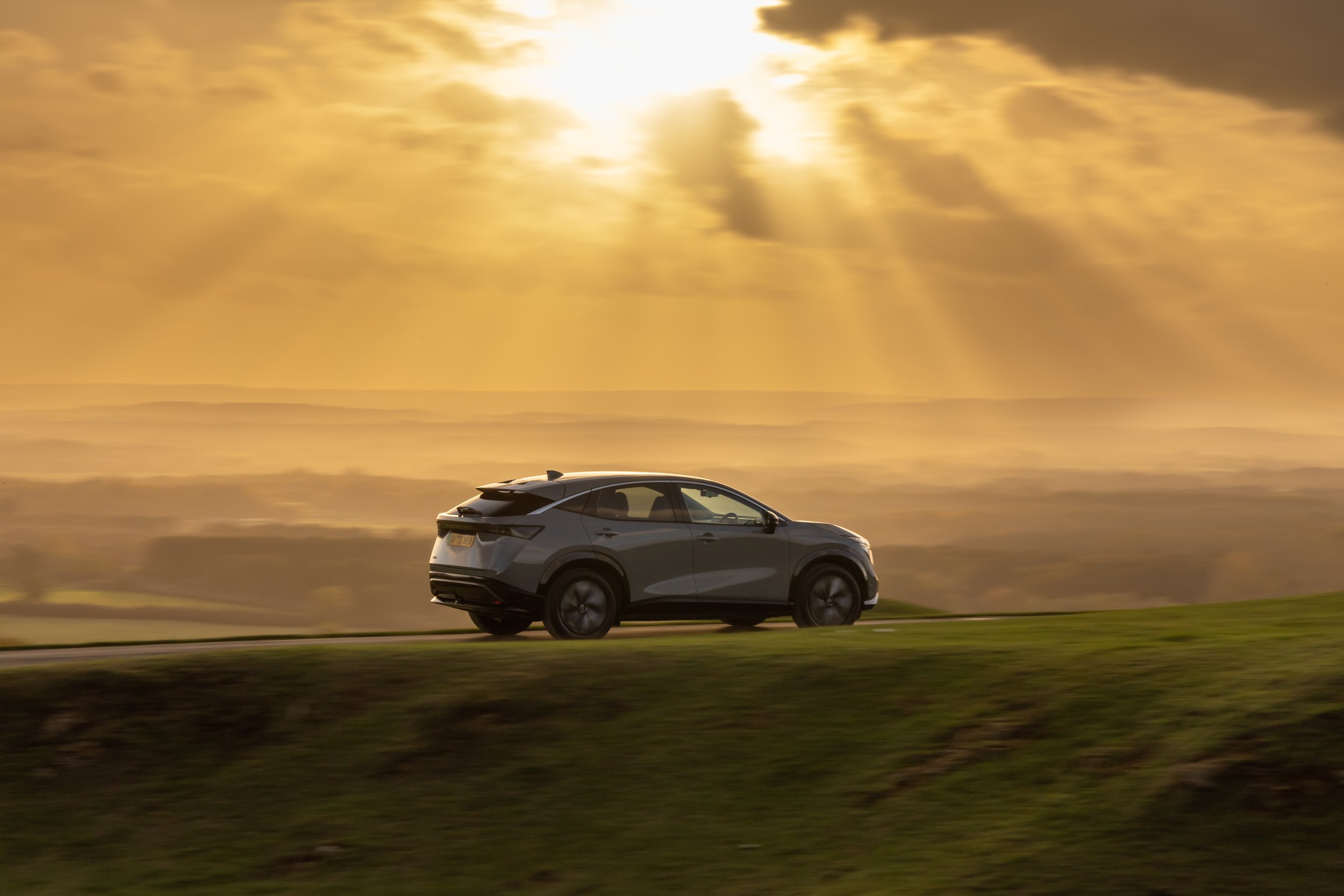Nissan Ariya - Turning Over a New LEAF
As a young journalist in the North East, one of my first jobs was covering the day a spade was put into the ground to begin work on what became the Nissan factory in Sunderland. It was November 7th 1984.
I later returned in 1986 when the first Nissan Bluebird rolled off the assembly line.
In 2011, yep, I was there again for the unveiling of Nissan’s first all-electric car, the Nissan LEAF. Did you know that LEAF (always written in capitals) stands for Leading, Environmentally friendly, Affordable, Family car? Use that in your next pub quiz.
It seemed like the start of a revolution, but here we are in 2023 and Nissan have finally got around to producing another 100 per cent electric car - the Nissan Ariya. It was due to arrive over a year ago but the microchip shortage hit it badly.
A spend of £39,645 gets you into the entry level, front-wheel drive Ariya with Engage trim. It comes with the smaller battery option, 63kWh as opposed to the other on offer with 87kWh. If you move up the range and go for the bigger battery, you can get an all-wheel drive, dual-motor version called e-4ORCE. 0-60mph comes up in 7.6 seconds. However, if you go for the all-wheel drive model, which develops 302bhp in Evolve trim, you drop the time to 5.7 seconds. And if you fancy the full fat Evolve + model, your output rises even further to 387bhp and your time to 60 mph drops to a shade over 5.0 seconds. You’ll also need to find an extra £20k when compared to the Engage 63kWh model.





As for range, the Ariya does pretty well. Nissan reckon the 63kWh battery can get you 250 miles (that’ll be something like 200 miles for most people in the real world) while the bigger battery will officially get you 329 miles. The additional weight in the e-4ORCE saps energy and knocks you back to officially 319 miles but, on the plus side, whereas the front-wheel drive models can hit 100mph, the all-wheel drive model ups that to 129mph.
Charging is about average. If you can find one of the increasing number of rapid chargers, you can get from 20 to 80 per cent charge in around 35 minutes. If you have access to a typical wall box, a full charge for the 63kWh battery takes around 10 hours….plug it in when you get home and it’ll be ready for the morning.
Out on the road, the Nissan Ariya is one of the easiest electric cars to drive smoothly that I’ve tried. Some are actually quite tricky with a bit of a numb feeling to the brake pedal, throttle and steering. Not so with the Ariya because all of the controls feel really positive and you can also use one-pedal driving which lets you bring the car to a halt without using the brakes. The regenerative braking is also really smooth, unlike some cars which seem to be all or nothing and can make for jerky progress.
I was lucky enough to be able to try two versions but the one I found to be the most comfortable out on the road was the performance focussed e-4ORCE model. Nissan has adjusted the suspension settings to deal with the extra oomph and it’s worked in abundance. Overall though, whichever Ariya you go for, you won’t complain. The bottom line is that the Ariya offers comfortable transportation for its occupants.
As for appearance, the exterior is a tad polarising. Some folk may love it but others won’t be so sure. There’s hardly any moulding to the panels and there are no creases apart from along the waistline. It’s all very minimalistic.
The interior on the other hand is a stunner. To be honest it’s so good that it could tempt buyers without them driving the car. It’s really stylish and has a genuine feel of premium quality about it. A neat touch is the way the heater controls shine through the fascia, although they could do with being a bit brighter.





There’s loads of room and, thanks to no transmission tunnel, the floor is totally flat. It gives an impression of space. Bearing in mind this is a coupé-crossover with a sloping roofline, there’s plenty of interior headroom too. The only downside of having nothing between the driver’s feet and the passenger footwell is that stuff can slide towards the pedals. Not quite ideal.
In terms of kit, Nissan hasn’t scrimped. The cheapest Engage still gets sat nav, DAB radio, LED lights, 3-mode driver selection (Normal, Eco and Sport), dual-zone climate control, twin 12.3-inch screens, rearview camera, front and rear parking sensors, and smart 19-inch alloys. Not much else you need really.
However, I like the Evolve trim. Okay, there’s a £7.5k bump in the price, but you now get an electric panoramic sunroof, 360 degree monitor, heated and cooled front seats which are both powered, heated rear seats, heated steering wheel and a really good 10-speaker Bose audio system. Yes, it’s a lot of money, but it makes your Ariya feel special.
I’d also go for the mid-range power of the 87kWh battery, but stick with front-wheel drive. This combination gives you the best range at 329 miles and let’s face it, 0-60mph in 7.6 seconds is adequate for day-to-day driving. You still have the wonderful get up and go which a battery-powered car gives you from a standstill.
So, the Nissan Ariya is good to drive, has lots of standard kit, a really smart interior and a decent range. What’s not to love?
Words: Graham Courtney
Pictures: Nissan

